Cheesemans' Ecology Safaris
Svalbard, Norway: “The Time Has Come The Walrus Said”
This is a guest blog from our frequent traveler, Jack Hochfeld, who has traveled with us on many trips, including to the Svalbard Islands. With his signature blend of keen observation and poetic detail, Jack captures the essence of Arctic exploration—from calving glaciers and curious walruses to the quiet wonder of the midnight sun. His reflections offer a vivid glimpse into the raw beauty and fragility of the far north.

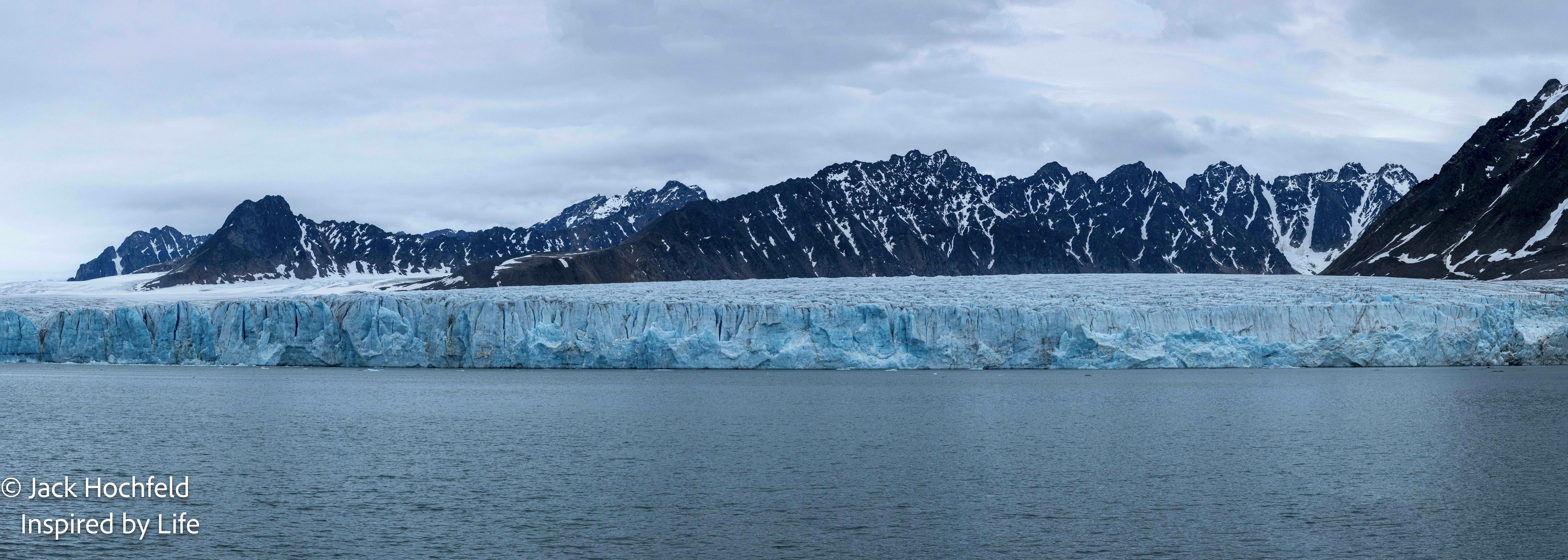
Departure to Svalbard
We fly for three hours north to Longyearbyen, Svalbard, 78° N, 15° E, the world’s most northerly permanent settlement with a population of over 1,000, halfway between mainland Norway and the North Pole. A directional sign at the airport shows 1,300 km to the North Pole and 18,960 km to the South Pole. We are well beyond the Arctic Circle and further north than we’ve ever been. Polar bears in Svalbard vastly outnumber people. Venturing beyond town limits without an armed polar bear guide is prohibited.
Svalbard falls under Norwegian sovereignty by international treaty, with shared economic and scientific interests, including Russian activity. It is home to the Svalbard Global Seed Vault, a secure backup for the world’s seed crops.
Onboard
We board our small expedition vessel with 12 cabins and 11 passengers, including two Australian couples originally from South Africa and others from the USA, including a Serbian couple. Many are academics: a mathematician, pathologist, microbiologist, GP, biologist, geologist, and a computer chip designer.
Our Alaskan and Californian guides are seasoned Arctic and Antarctic travelers, marine and wildlife biologists, and accomplished photographers with experience shooting for National Geographic, the BBC, Animal Planet, and more. Both are professional, friendly, and knowledgeable.
Cabin & Seas
Cabin space is efficient, designed for exploration rather than luxury. Space is limited, so we packed sparingly and carefully. As we leave the harbor and enter open seas, the ship rolls a bit. Once in the sheltered fjords, we find our rhythm with the ocean and settle comfortably into life at sea.
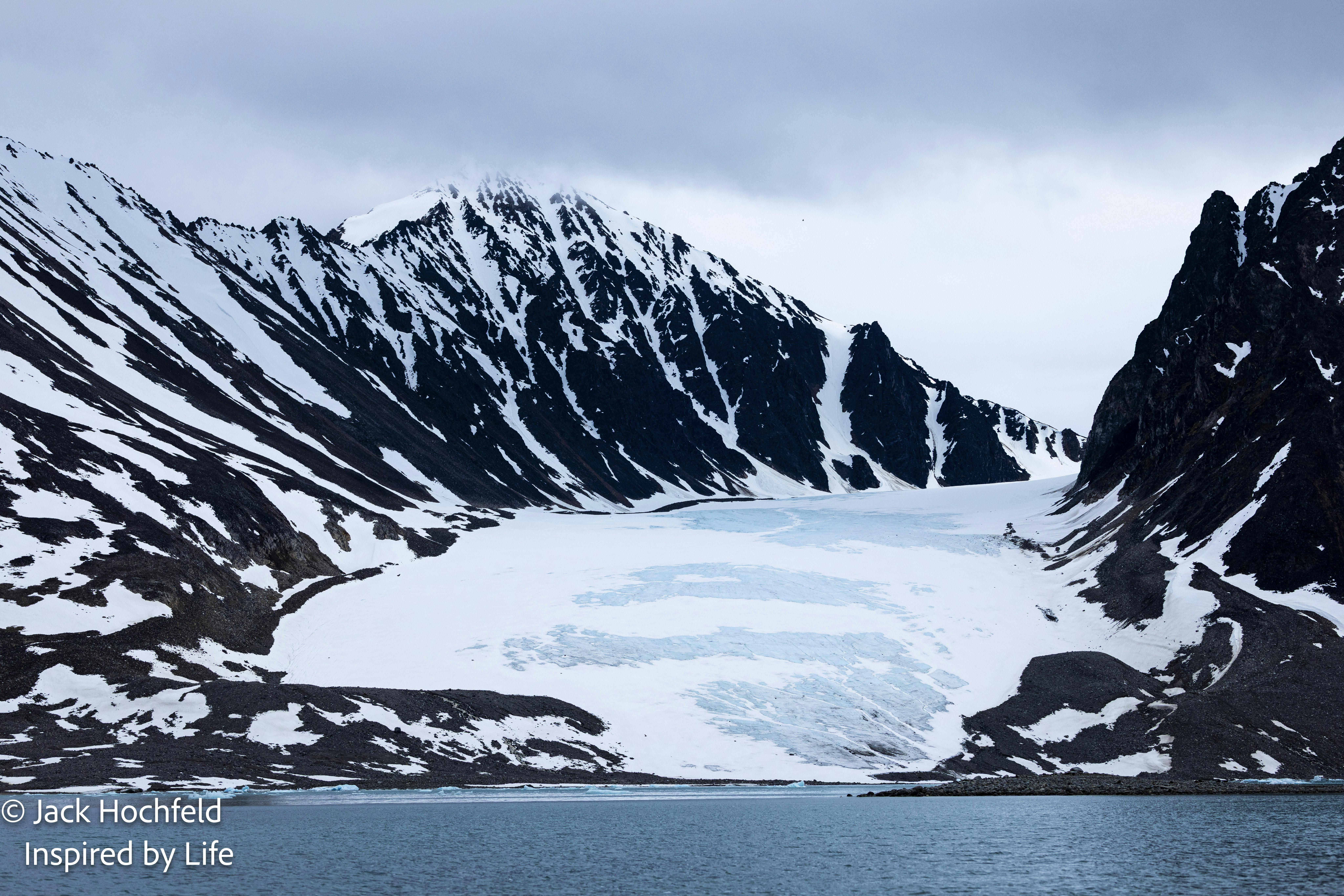
Arctic vs Antarctic
The Arctic is surprisingly different from Antarctica—less dramatic but more subtle, milder, with calmer seas and a more leisurely pace. Though there are fewer species, the bird flocks are immense. The Arctic is an ocean surrounded by land, while the Antarctic is land surrounded by ocean—contributing to their contrasting characters.
This rugged, raw environment reveals its beauty slowly, through patience and presence. Stark, monochromatic landscapes dominate—sharp peaks under a heavy grey sky mirrored by a sea tinged with glacier blue and pale green. The black-and-white banded cliffs appear compressed between sky and sea, forming a sublime, minimalist canvas.
Glacier Approach & Wildlife
Our itinerary is shaped by weather and wildlife sightings. We aim north. One day, bright sun gives way to dense fog, and though we near Brasvellbreen—a massive 45 km glacier with cascading waterfalls—conditions require we abandon the approach. Instead, we reverse course and continue west and south, ultimately reaching the northernmost point of our journey beyond 80° N, less than 1,000 km from the North Pole.
Towering cliffs come alive with nesting birds: a constant swirl of flight, sound, and motion. We slowly nose through brash ice, the light catching the translucent blues and whites.
A sharp crack breaks the stillness—a glacier calves. Ice shards explode into the sea with a roar and splash, stirring the water and drawing krill to the surface. Clouds of Black-legged Kittiwakes descend, feeding and calling across the icy amphitheater. The air is sharp and clean.
Lodges & Peace
A desolate hunting lodge, abandoned yet still used in winter, offers shelter from the elements. Another, Texas Bar, is stocked with alcohol—true Arctic essentials. The waves gently lap the shore, the only interruption to the profound quiet.
We spot a pair of Rock Ptarmigans. The male, in white plumage with feathered legs, blends into the snowy terrain. On drifting ice, we observe sleeping seals and walruses. We maintain distance as required by Svalbard regulations, observing wildlife calmly and without interference. The rhythmic clunk of ice against the ship’s hull adds to the soundtrack of solitude.
Editor’s Note: All wildlife encounters are conducted following AECO (Association of Arctic Expedition Cruise Operators) guidelines.
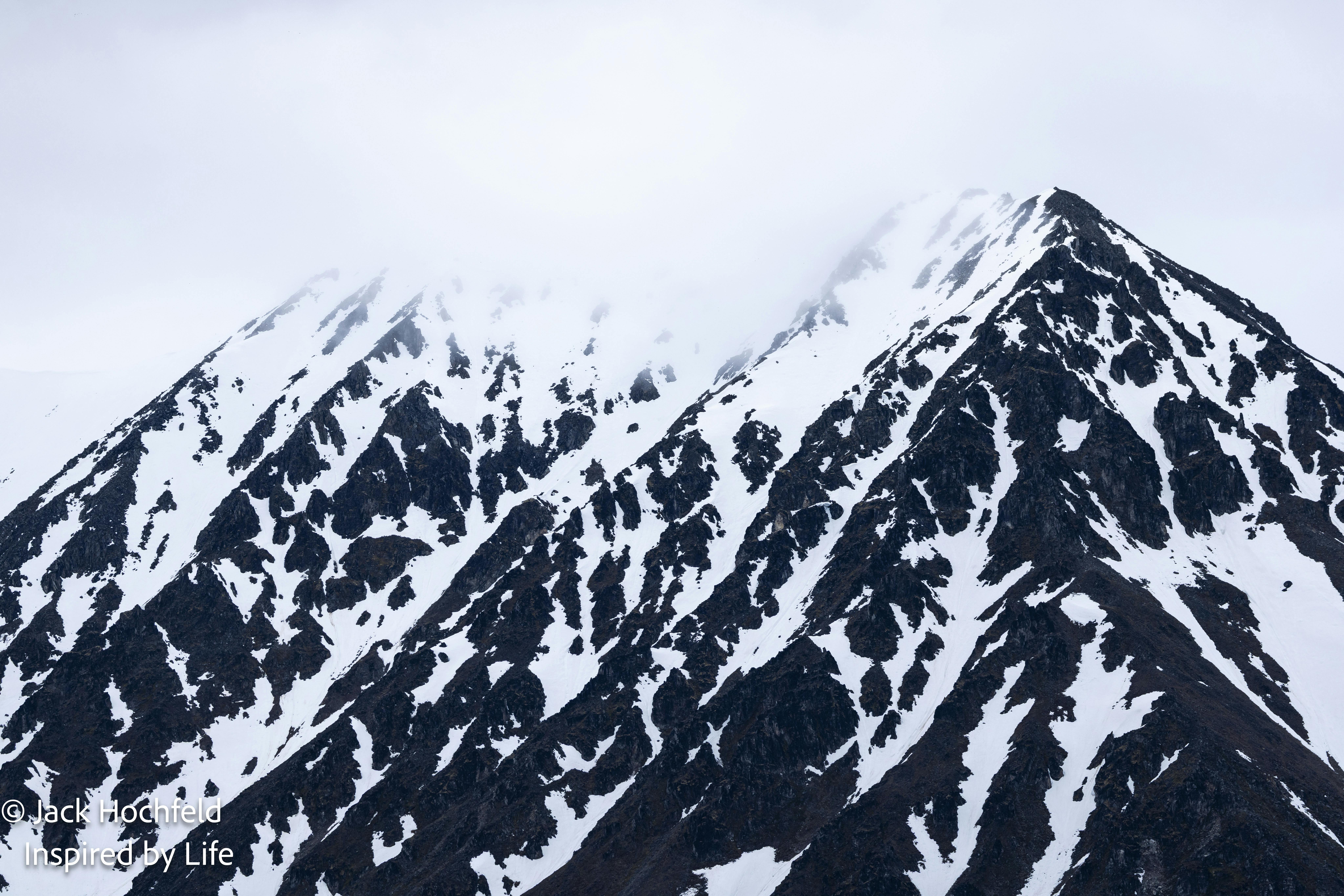
Wildlife Encounters & Walrus Thought
We live under 24-hour sunlight. The midnight sun distorts our sense of time—watches become essential for navigation of daily life. While animals follow natural rhythms, we operate on a fixed schedule, balancing Zodiac excursions, hikes, and onboard life.
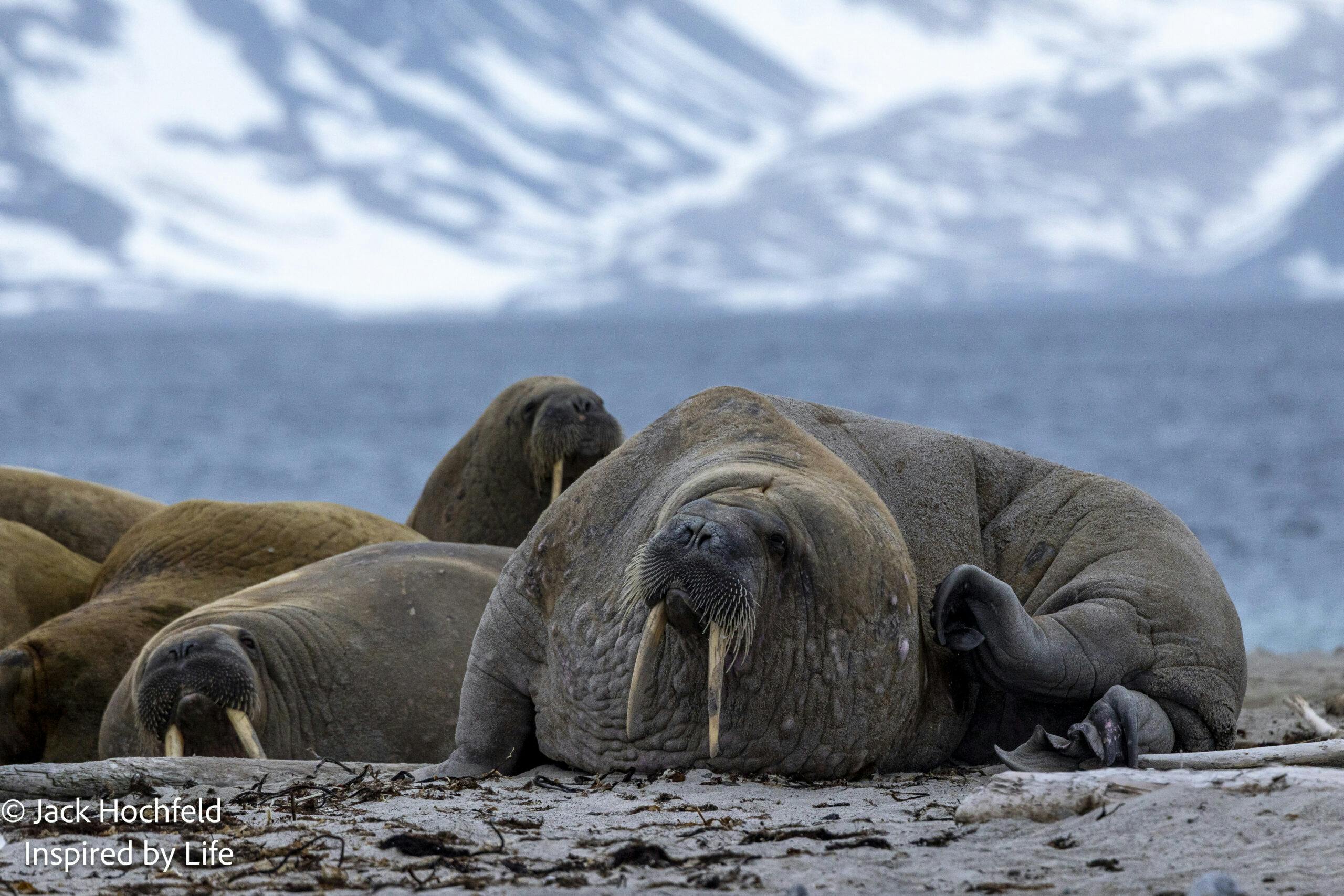
First Zodiac Excursion & Polar Bears
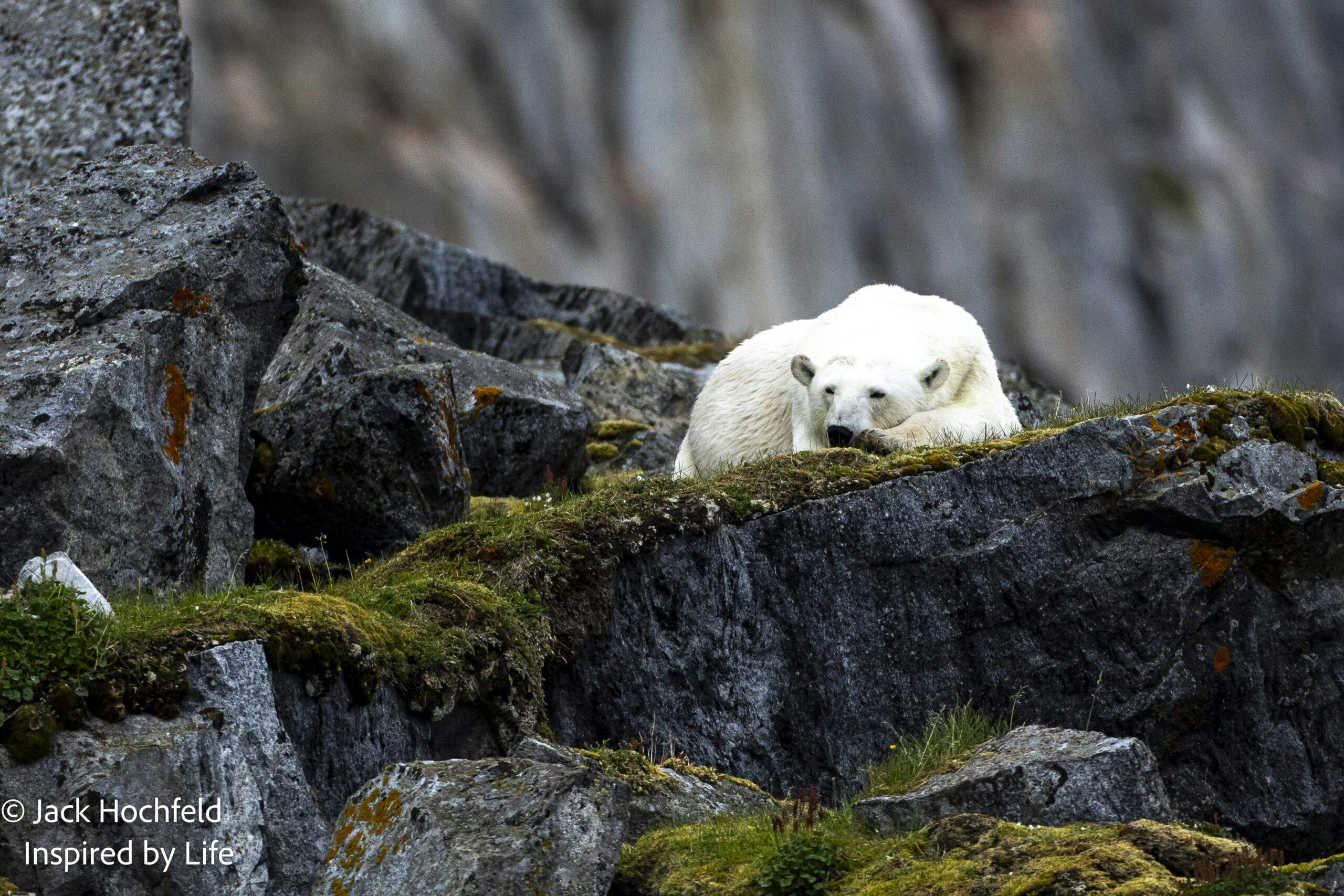
On our first Zodiac outing, we spot three polar bears interacting over a walrus carcass. They are distant, and the conditions are challenging for photography, but observing their behavior—the posturing, tugging, and shifting between individuals—is captivating. With the right lenses and good resolution, excellent images can still be obtained despite the distances encountered.
Editor’s Note: Travelers are advised to always bring their primary camera gear on Zodiac outings, as significant wildlife sightings can happen at any moment.
Daily Wildlife & Wildlife List
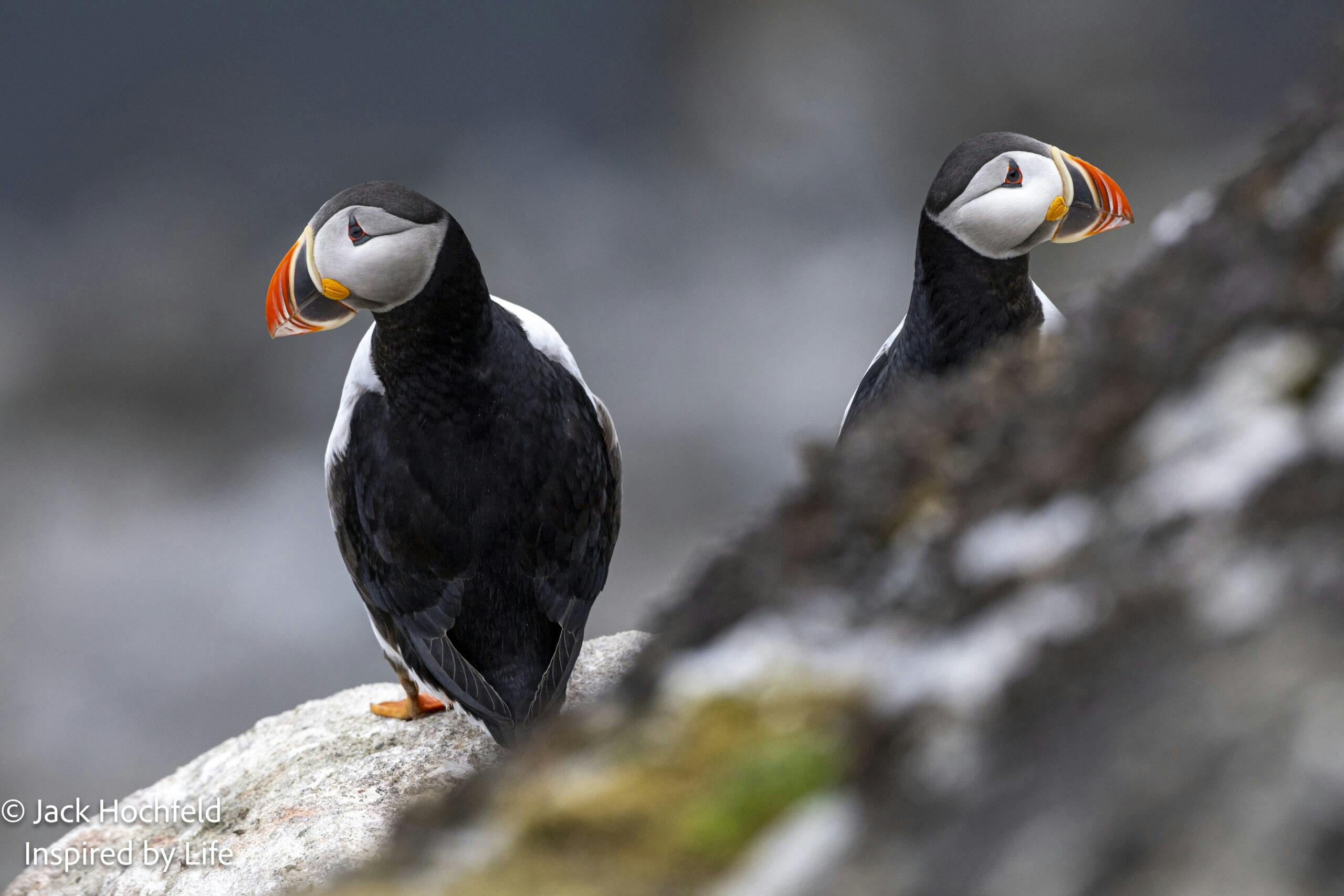
Each day we venture out—by Zodiac or on foot—and are rewarded with sightings of polar bears, reindeer, Arctic foxes, walruses, seals, and an impressive array of birds: Arctic Terns, a lone Red Phalarope, an Ivory Gull, Black and Brunnich’s Guillemots, Kittiwakes, Glaucous Gulls, Common Eiders, and Barnacle Geese. No whales this trip, but Northern Fulmars occasionally follow the boat. Their flight patterns often defy our attempts to photograph them, vanishing just as the shutter is raised.
All landings are guided and safeguarded—our team always carries rifles as a legal and safety requirement in polar bear territory.
Polar Bears
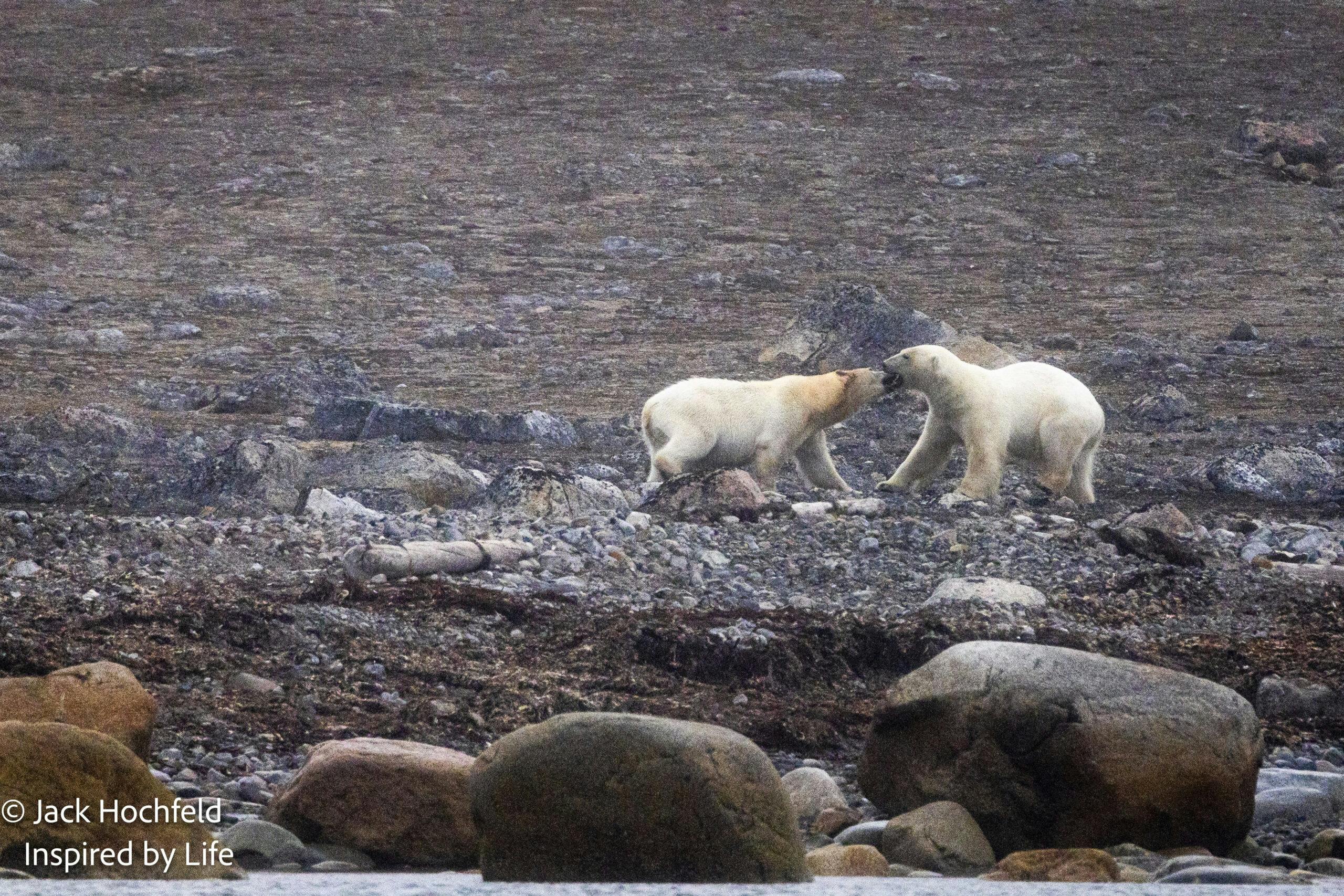
Our polar bear sightings are memorable. We observe them sleeping, swimming, and traversing the ice. They appear nearly weightless, stepping with precision, their movements elegant and unhurried. They scan their environment for any signs of movement, the top predator in their domain.
Arctic Fox Cubs & Reindeer Flora
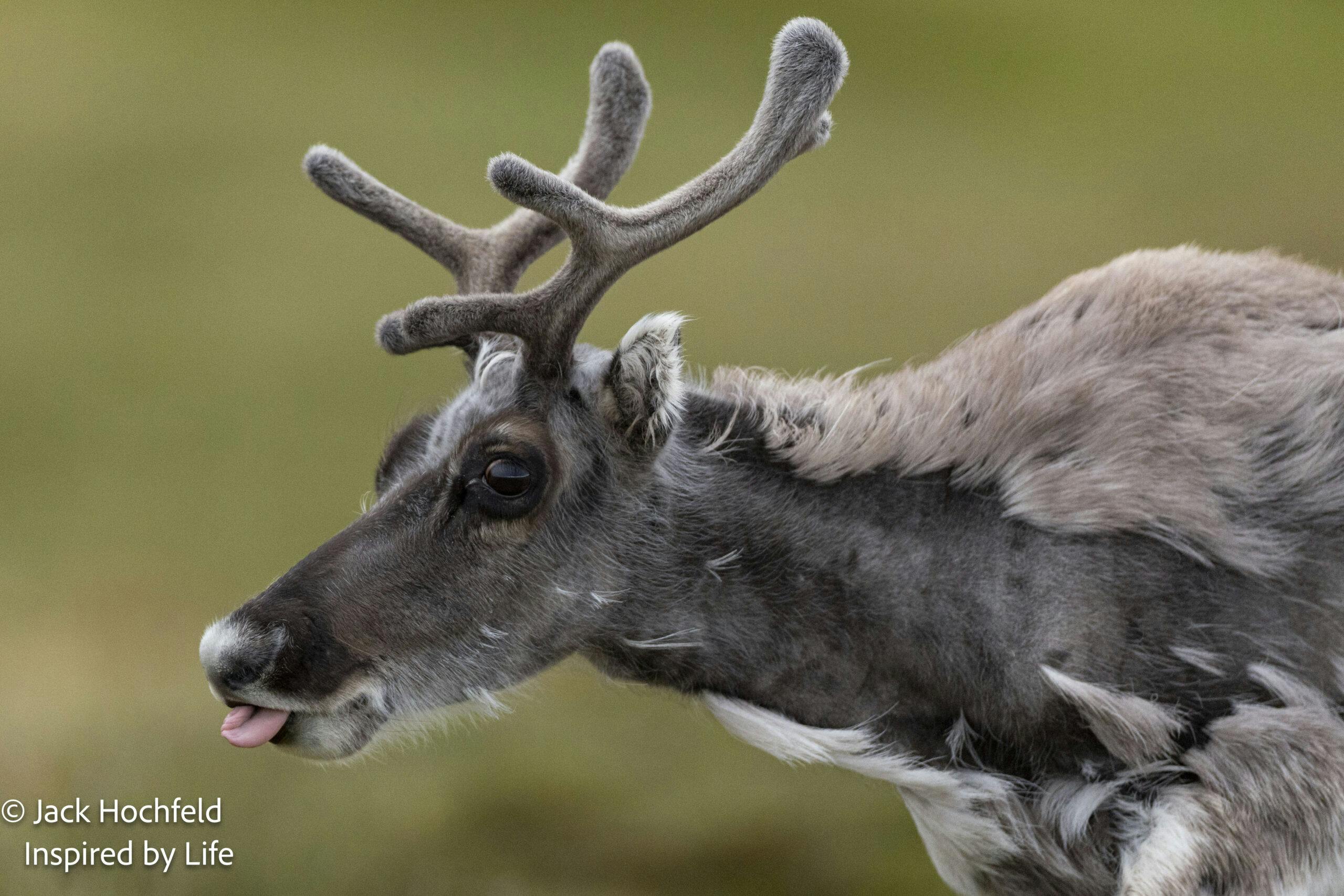
Unlike previous experiences where we watched fox dens from afar, here the Arctic fox cubs rest openly under a rock overhang, unconcerned with our distant observation.
Reindeer dot the steep slopes, grazing the sparse vegetation. Polar Willow blooms—though only centimeters tall, it thrives in this harsh climate. Lichen species (742 in total) offer bursts of color and serve as vital winter forage.
Hunting & Population
Foxes, seals, and reindeer are still legally hunted in Svalbard, though population data indicates healthy numbers for certain species.
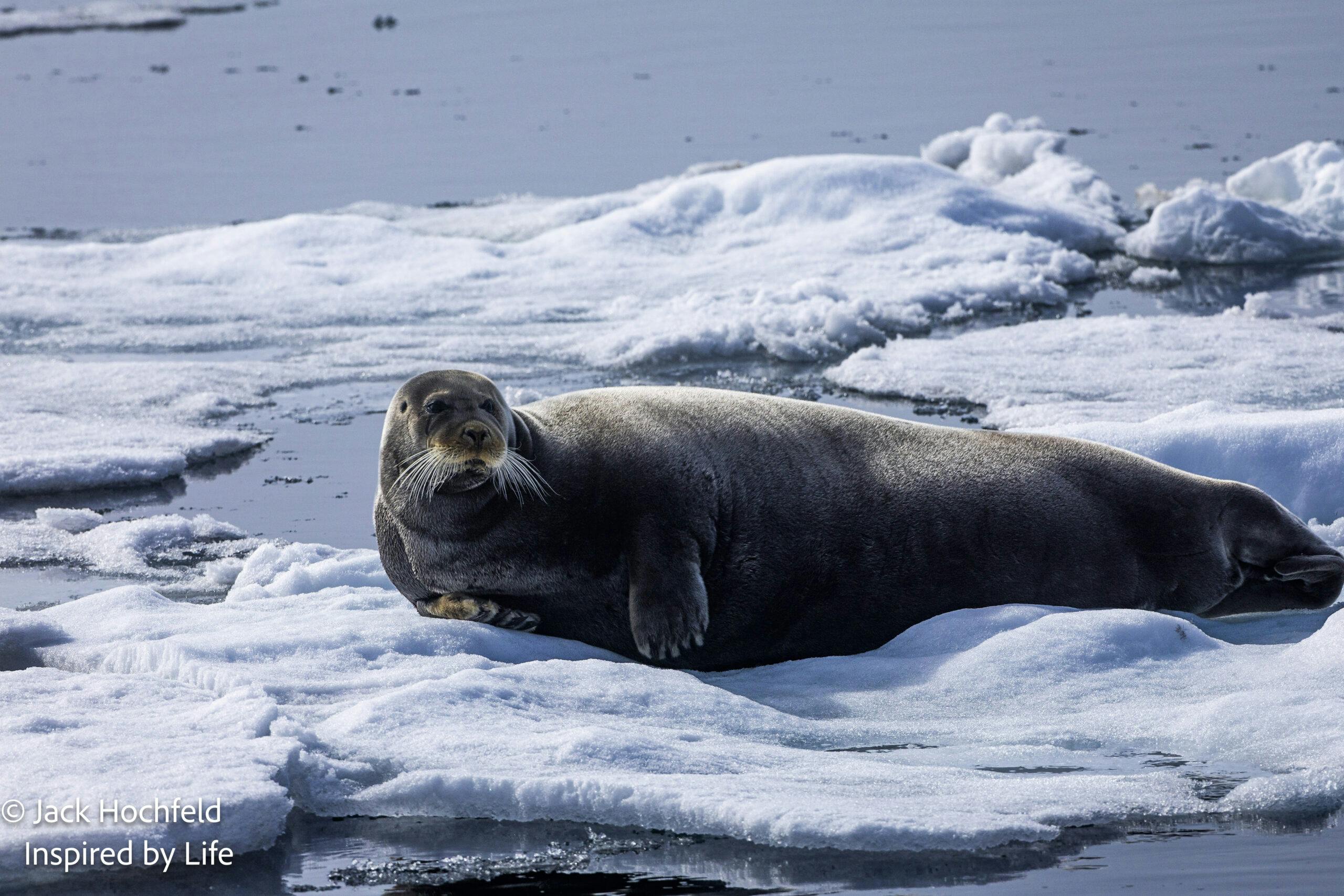
Distorted Time & Duration
We spend 10 days aboard our small but homey expedition ship. With no sunrise or sunset, time becomes elastic. We accomplish much, yet it feels as though we’ve barely begun. The Arctic compresses and expands time all at once.
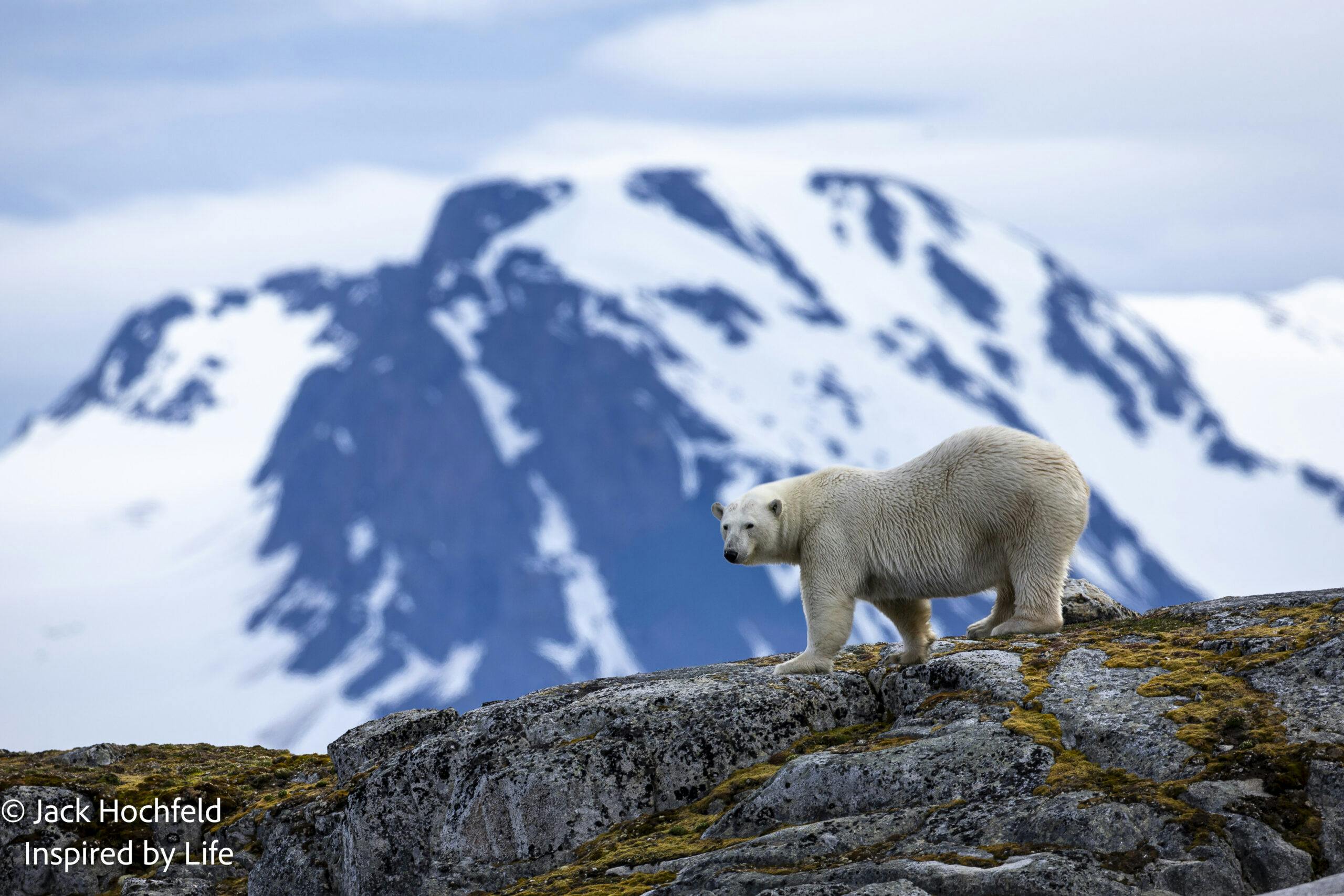
Final Reflection & Invitation
We leave awed by the stark beauty of the Arctic—its silence, its light, its slow rhythms. This is a land where survival is never guaranteed, and every birdcall, pawprint, or breeze over ice feels miraculous.
To witness this world—still wild, still enduring—is a rare privilege, and a reminder of what we need to protect.